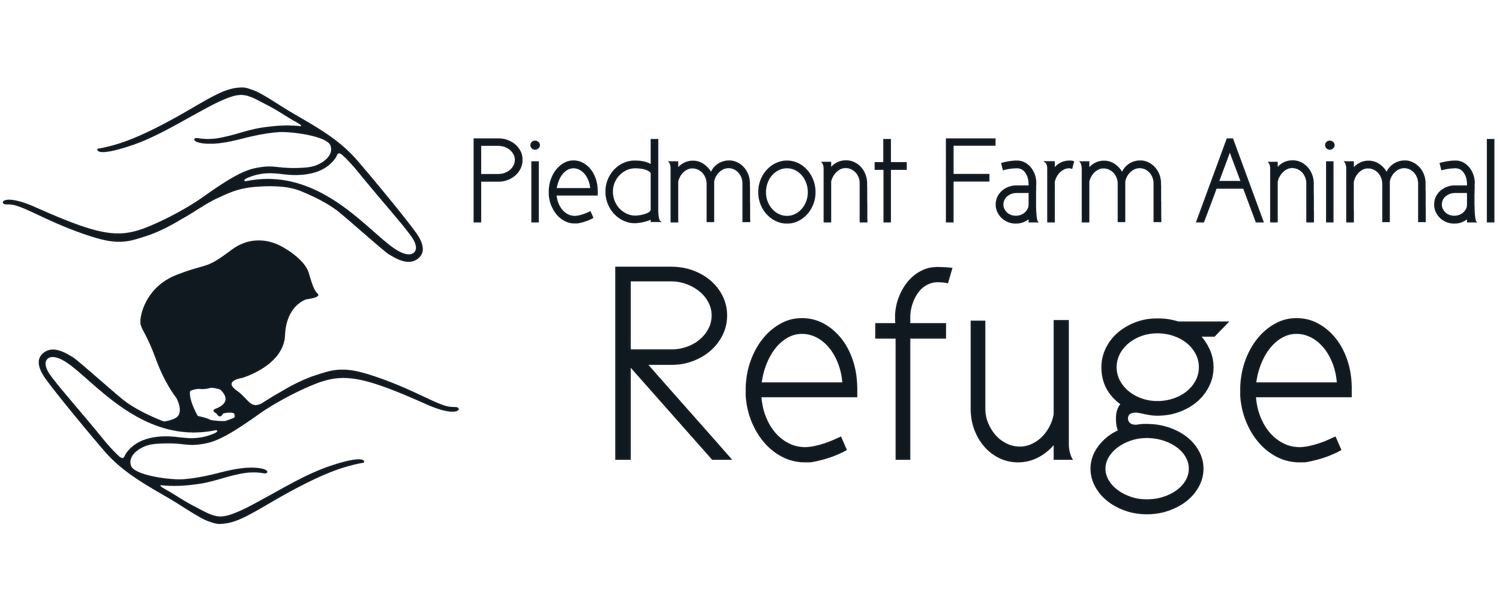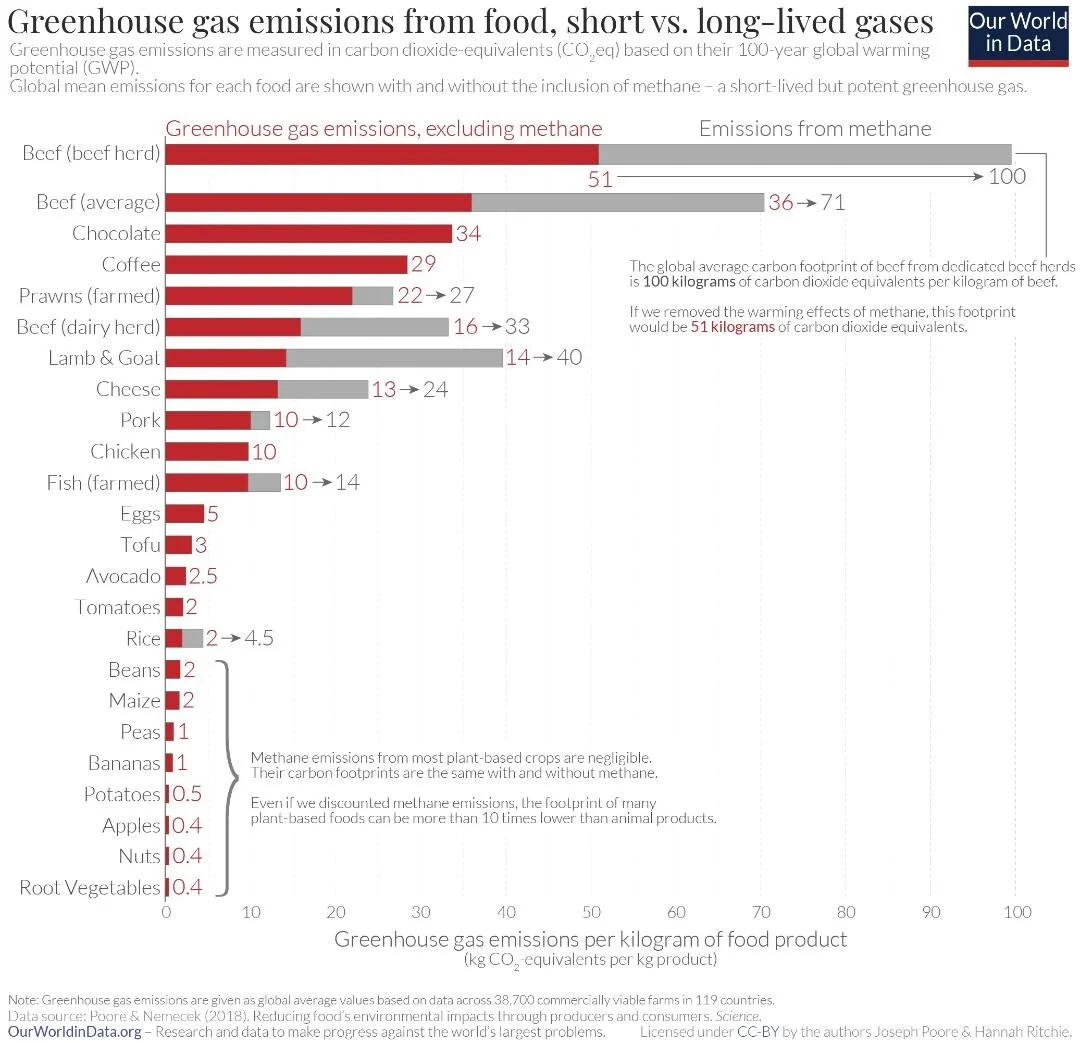Animal Farming – An Overview
By Ashish George for Piedmont Farm Animal Refuge
Why Factory Farming is Wrong
In recent years, the term “factory farming” has received more and more attention. The idea is simple: to cut costs and maximize production, animals used for food are kept in a high-density industrial environment without access to the outdoors or even space to freely move around. Veterinary care is primarily focused on keeping the animals alive long enough for them to be slaughtered and shipped off for sale rather than ensuring that they are protected from the many kinds of distress you would expect to result from such unsanitary, crowded conditions. Pigs, cows, chickens, turkeys, sheep, goats, ducks, and turkeys end up on people’s plates after prolonged confinement in which their most urgent natural instincts—for play, for companionship, for nurturing their offspring—have been frustrated. About 99% of animals in the U.S. are raised on factory farms. As awareness of factory farms has spread, so, too, has disgust with what many people accurately perceive as a cruel system of exploitation.
Why Small Farms Aren’t the Answer
Small farms are often held up as a sustainable alternative. According to the popular story, animals get what they are denied on factory farms in the picturesque open fields of less intensive business operations that can harmonize between the needs of the community and the land. Driving by these farms provides glimpses of relaxing cows swatting flies with their tails under the shade of a tree, seemingly offering confirmation of a humane way to meet the appetite for animal products. Small farms are also paired with nostalgia for a simpler time when close-knit families were caregivers who understood each animal’s history and needs. Unfortunately, this appealing mirage dissolves into unsettling realities upon further scrutiny. Cows are kept pregnant through artificial insemination because, as mammals, they have bodies that don’t produce milk unless they get the signal that they are caring for offspring or about to care for offspring. When the cows’ usefulness to farmers as milk production units runs out, they are destined for slaughter. Egg-laying hens meet the same fate. Pigs, goats, sheep, and other animals are also stamped with dates beyond which their emotional value to the farmers will be outweighed by the economic incentives of consumption. Think of Charlotte’s Web, the classic children’s story in which a pig named Wilbur is saved by a clever spider’s efforts. We want Wilbur to be safe from slaughter not because he is suffering at the hands of neglectful farmers, but because we recognize money is not a good reason to kill an animal who wants to live.
Profits over People and the Environment
Money is also a lousy basis for living in harmony with human needs. As Hannah Ritchie writes, “Livestock takes up nearly 80% of agricultural land, yet produces less than 20% of the world’s supply of calories.”
In fact, the land inefficiently devoted to raising animals is threatened by the very practice of raising those animals. The methane and carbon dioxide produced by farm animals contribute to global warming, which in turn leads to more floods and droughts. The American Meteorological Society (AMS) released a report in January 2023 tying global warming to extreme weather events. This is not just hypothetical. Global warming boosted the probability of the extreme drought in California and Nevada in 2021 by a factor of six.
The Common Problem
Regardless of the efforts farmers might make to avoid ethical and environmental harm, which are unlikely to account for ordinary human error, factory farms and small farms both rely on ultimately killing animals for the fleeting satisfaction of consumers. In an era of healthier plant-based diets and tasty meat substitutes on grocery store shelves, that business model can only persist if farm animals are regarded as disposable, mindless property. But as you will see elsewhere on this website, that claim isn’t even remotely true. Farm animals have poignant, unique inner lives—recall Wilbur from Charlotte’s Web—that are captivating for anyone who is willing to pay attention. Harming them is akin to harming our dogs and cats.
A chair is property. A car is property. But animals are not property. They are our companions on this planet, trying to find connection and pleasure where they can. Just like us.
Resources:
The Humane League. “Factory Farming: What it is and Why it’s a Problem.” TheHumaneLeague.org. https://thehumaneleague.org/article/what-is-factory-farming. December 1, 2020. Accessed March 20, 2023.
Ritchie, Hannah. “How Much of the World’s Land Would We Need in Order to Feed the Global Population with the Average Diet of a Given Country?” OurWorldinData.org. https://ourworldindata.org/agricultural-land-by-global-diets. October 3, 2017. Accessed March 20, 2023.
Ritchie, Hannah. “The Carbon Footprint of Foods: Are Differences Explained by the Impacts of Methane?” OurWorldinData.org. https://ourworldindata.org/carbon-footprint-food-methane. March 10, 2020. Accessed March 20, 2023.
Hersher, Rebecca. “Climate Change Makes Heat Waves, Storms, and Droughts Worse, Climate Report Confirms. NPR.org. https://www.npr.org/2023/01/09/1147805696/climate-change-makes-heat-waves-storms-and-droughts-worse-climate-report-confirm. January 9, 2023. Accessed March 20, 2023.




